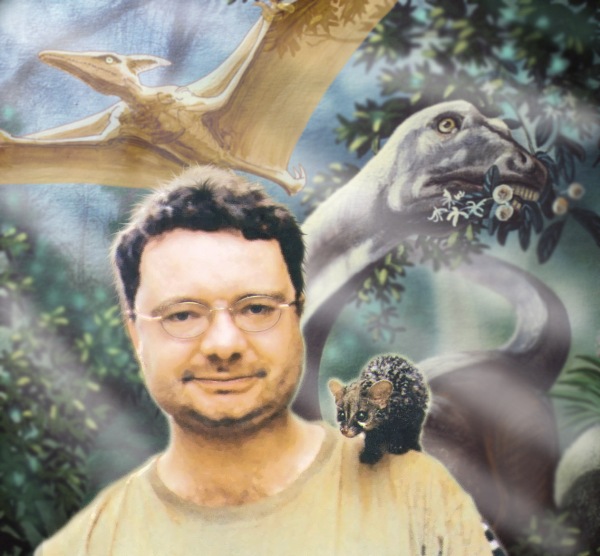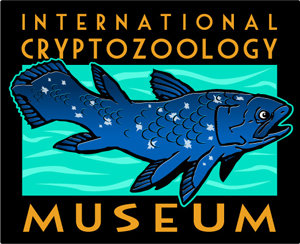
Bill Rebsamen’s tribute to Scott Norman, who passed away suddenly earlier in 2008.
This may be a difficult essay for you to read, but this is a subject we all have ignored for a long time. There is a darker side that occurs after the obituaries and remembrances are written. What happens after the tributes are published? Why have we avoided the obvious, and watched legacies vanish? There are some things I’ve got to say.
We shall pick up an existence by its frogs.
Wise men have tried other ways. They have tried to understand our state of being, by grasping at its stars, or its arts, or its economics. But, if there is an underlying oneness of all things, it does not matter where we begin, whether with stars, or laws of supply and demand, or frogs, or Napoleon Bonaparte. One measures a circle, beginning anywhere. ~ Charles Fort, Lo!
Remembering
For several years now, I’ve recognized the importance of celebrating the lives of cryptozoologists who have passed away.
Unremembered, unembraced, uncelebrated. I feel that is no fate for cryptozoologists who have toiled so hard in the fields of the hidden for so long. I figure while others wish to understand the world through the deaths of kings, movie stars, artists, and media spokespeople, I will know an existence by its cryptozoologists, those who have searched in the natural world for the unknown species on the edge of discovery.

Jacqueline Roumeguere-Eberhardt, standing.
To me, if no one writes remembrances for some of these great people, who will? Indeed, I feel directly responsible for getting the wider recognition for the good works of people like Bernard Heuvelmans, Rene Dahinden, Grover Krantz, Jordi Magraner, Scott Norman, Archie Buckley, Jacques Boisvert, Jacqueline Roumeguere-Eberhardt, Mark Bayless, and others now known to a wider public through spinoff obituaries carried via The Times of London, National Public Radio, The New York Times, and other media outlets.
In no way am I saying this to be applauded personally, as I wish many more would do as I have, and write their own celebrations of cryptozoologists’ lives and obituaries. This should be especially done, if you worked closely with a cryptozoologist who has died. Indeed, sending on yours, my or others’ obituaries to the mainstream media, oftentimes, is important, as these women and men need to be discussed, to serve as models for future generations.

Bernard Heuvelmans and a friend by Alika Lindbergh.

Others who have passed this way: L to R ~ George Haas, Rene Dahinden, and Archie Buckley – and on the right, Archie Buckley alone; group photo taken by Loren Coleman, at Haas’ Oakland home, 1975.
Unknown, Unheralded
The wide-ranging labor of a cryptozoologist sometimes goes unheralded, unfortunately, until the person dies. That’s the reality of life – and death. It should not be so, and I think we all should do our part to make certain those that pass before us are recalled. We stand on their broad shoulders.
Bernard Heuvelmans, before he died, worried he would not be remembered for his groundbreaking studies in the field of cryptozoology. He should not have feared so, for his contributions are many. Likewise, those taken from us so soon and so early, such as Mark Bayless and Scott Norman, in their 40s, gave much in their short lives to our field and deserve full honors, I feel.
But who knows about them if we don’t acknowledge them? Don’t write about them? Don’t pass on their legacies to the young and the old?
The Death Markup
Now, comes the dark side of death, however, and I must speak of it. I have been keeping quiet for too long, and need to address what happens when cryptozoologists die, beyond their obituaries, remembrances, and memorials.
One of the immediate things that takes place is what I call the “death markup.” Items linked to the dead cryptozoologists experience a price increase for a little while. Australian Yowie author Paul Cropper sent me word that after Tasmanian Tiger researcher Eric Guiler recently died, an online bookseller sent an ad to him for the sale of Guiler’s Thylacine book for $477. I did a little research myself and found two copies of Guiler’s book have just been placed on sale for well over $300 US and nearly $500 US.

Eric Guiler holds his own personal taxidermy artifact (above), an actual Thylacine head, symbolic of his long search (below). Where is the head now?

Most cryptozoologists I know are collectors – of files, of evidence, of their own notes, of books, of relics, of souvenirs of their travels, of cryptia replica, of equipment in the quest, and of physical remembrances of their expeditions and treks in search of cryptids.
What becomes of all of this “stuff” and how can we ask about and request people preserve these collections, for history? These are not easy questions.
More Tales From The Dark Side
Ask yourself, what happens to these materials, even the minor ones, after these folks die? Do you have a will? Have you told people near you what to do with your collection?
With some planning, a few worthy archives and more go safely into locations where others can access them. Then, the files, books, and collections become resources for future study and research.

Why aren’t people routinely asking questions, such as where are (the above-pictured) “Father of Dracontology” Jacques Boisvert’s papers? What notes on human vs Sasquatch foot morphology did Archie Buckley leave behind that might be instructive to read? Why can’t someone find a copy of the episode of “Wild Kingdom” on which Marlin Perkins discusses Yeti?
We know the answers to only a few locations of such archival materials.
Ivan T. Sanderson’s papers are with the American Philosophical Society. George Agogino’s and Carleton Coon’s papers are accessible at various universities.

Bernard Heuvelmans’ archives went to Switzerland’s Museum of Zoology of Lausanne, and there is a dedicated room set aside for researchers.
From there, things get spotty.
Do you know where Tom Slick’s cryptozoology papers are? Has anyone preserved the records of the first and second Slick-Johnson Snowman expeditions? How about the Pacific Northwest Sasquatch Expedition sponsored by Slick?
Or even where does one go to find, specifically, archives of Grover Krantz’s Sasquatch papers?

It seems Grover Krantz’s Sasquatch archives went to others, but apparently not to any one location. It is well-known, for example, that Krantz’s own skeleton and that of his dogs are in the Smithsonian and his anthropology works are with academic sites. Most of Grover’s Sasquatch casts, luckily, are now in the Jeff Meldrum collection. But Grover’s books from his library (so noted because of the inscriptions inside) began showing up on eBay, soon after his death. Where are Grover’s notes on his Sasquatch studies?
I have been told shocking stories of collections not being seen for how important they are. And disappearing. You probably know of accounts you have heard about or could share yourself. There’s nothing unique to these scenarios, but it is often unspoken and horrific as to what happens to these materials.
Many of us, of course, who have our own collections and museums, are careful to be respectful and watch, with upset, as certain situations unfold. Yet it is a difficult position in which to be placed. We have to guard against being seen as “vultures,” ourselves, for suggesting that items be kept together, and remain open to other researchers through being donated to the few of us who are willing to preserve the history of cryptozoology. Yet, how does one steer the correct route through such sensitive matters?
We must stop beating around the bush. I have in my memory a remarkably heart-breaking example of the horror of seeing a collection lost. Someday I will write more of that. But I won’t today. I can’t yet.
In the meantime, I hope I have opened a new door leading to a bit of self-examination within the field of cryptozoology, and for the saving of our history. Tell me your examples, share your stories, and I’ll record the awful tale I have nightmares about for you on another day.
^^^^^^^^^^^^^^^^^^^^^^^^^^^^^^^^^^^^^^^^^^^^^^^^^^^^

International Cryptozoology Museum
c/o Loren Coleman, Director
PO Box 360
Portland, ME 04112
USA
Follow CryptoZooNews
Not Found
The resource could not be found.